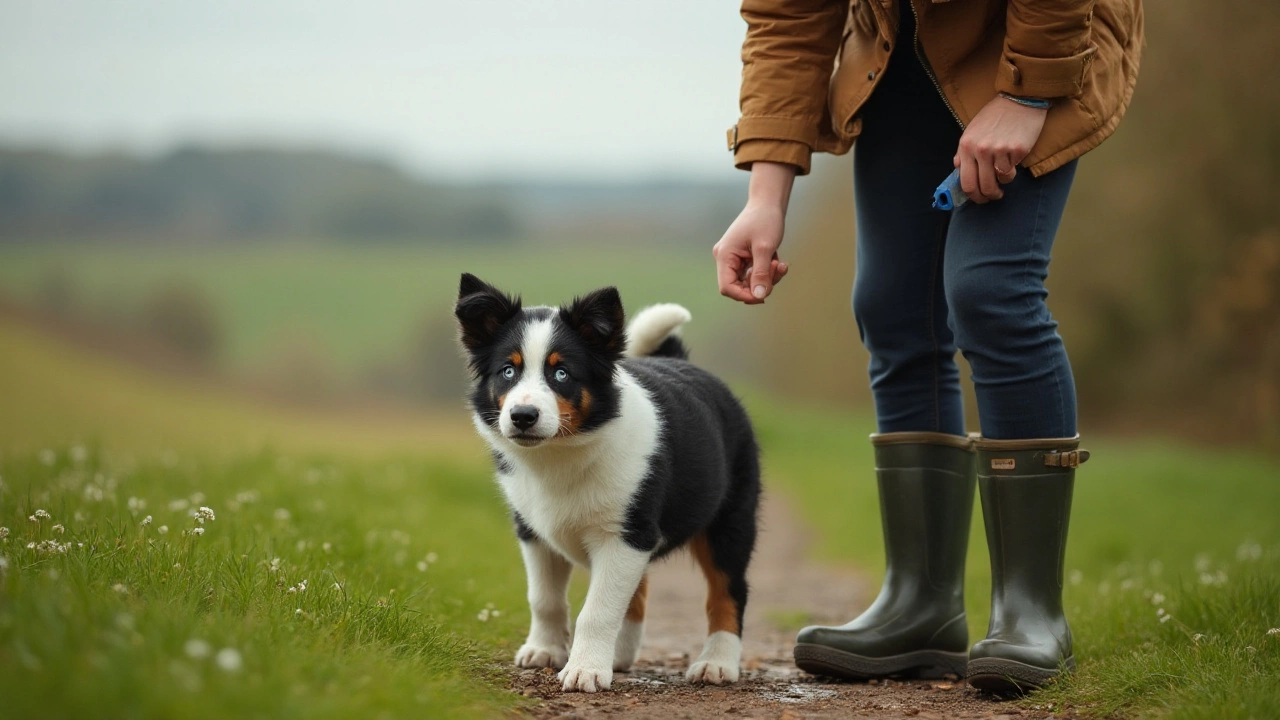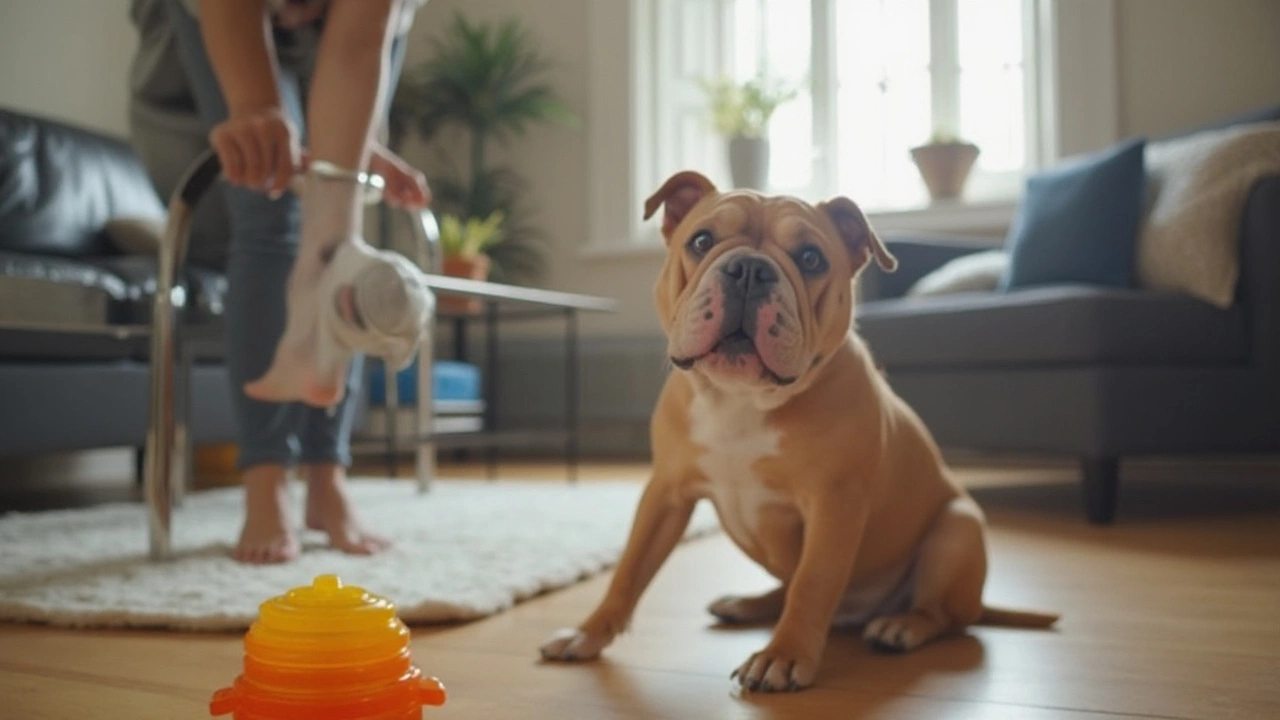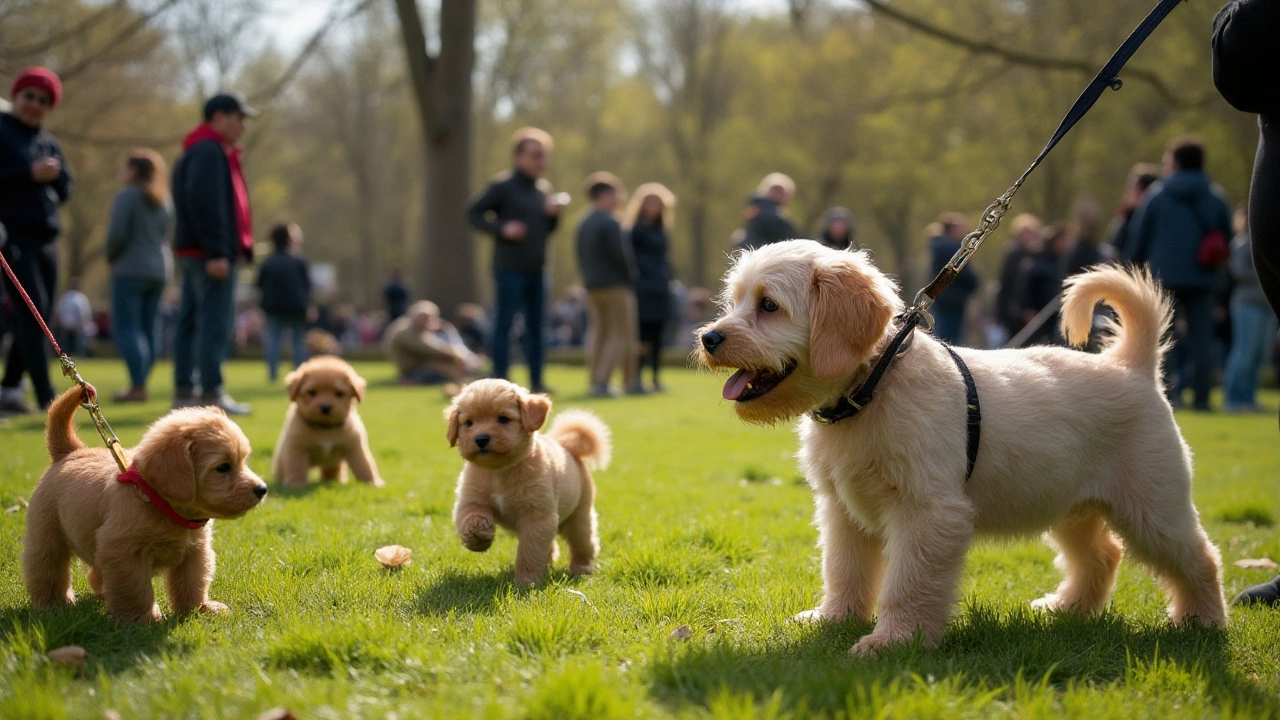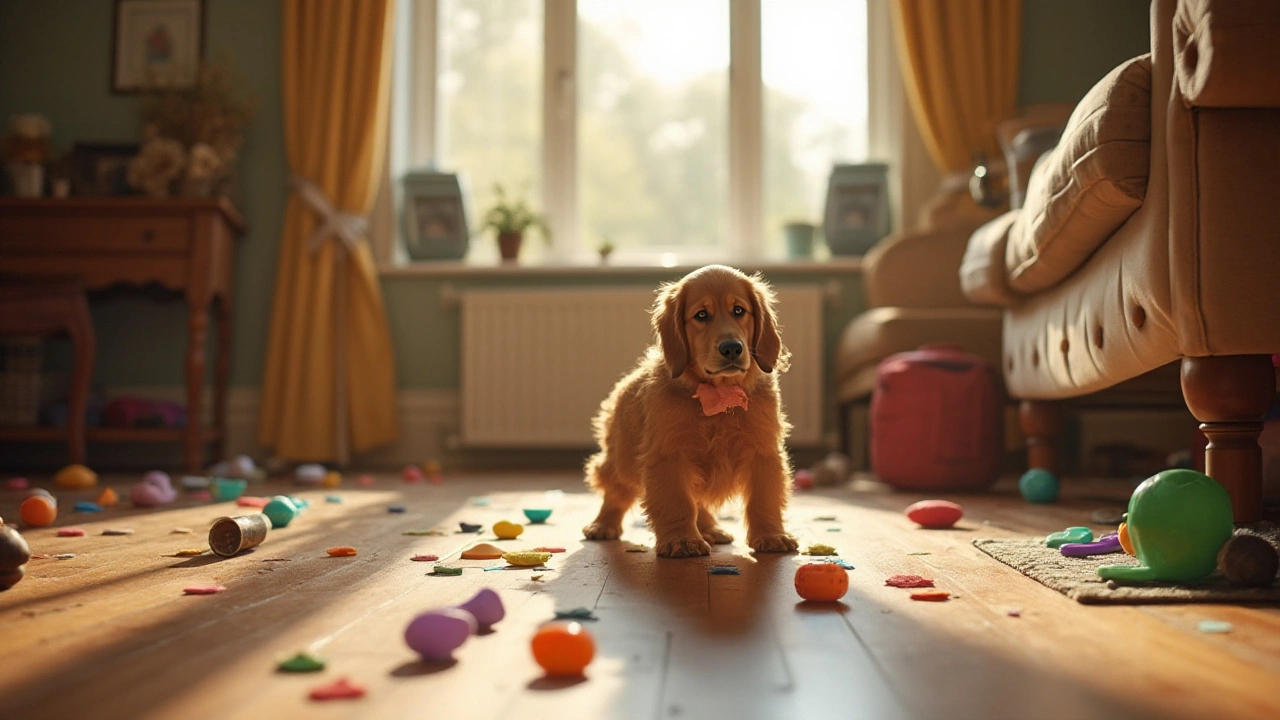Potty training a puppy is one of the important steps in your journey as a pet owner. It's a process that requires patience, consistency, and sometimes quite a lot of creativity. While some puppies catch on quickly, others might need more time and effort.
Different breeds come with their own set of characteristics that can make potty training either a breeze or a significant challenge. Knowing which breeds might be trickier to train can help set you up for success as you embark on this adventure with your furry friend.
In this article, we'll explore some of the breeds that typically present more hurdles in terms of house-training. We’ll also share practical tips to help you through the process and discuss how the right toys can support this crucial learning experience.
- Difficult Breeds for Potty Training
- Common Challenges and Tips
- Utilizing Puppy Toys in Training
- Maintaining Patience and Consistency
Difficult Breeds for Potty Training
Training your beloved puppy is no walk in the park, especially when dealing with certain breeds. Some dogs are notoriously difficult to potty train, requiring extra patience and innovative methods. Among the challenging bunch, breeds like Dachshunds, Bichon Frises, and Pekingese often top the list. These puppy training scenarios are more akin to marathons than sprints, given the various traits these breeds possess. For instance, Dachshunds, with their adorable sausage-shaped bodies, are incredibly intelligent, yet their independent streak can make consistent potty training an uphill battle. They are known for their stubborn nature, which often manifests as reluctance to learn new routines.
Worthy of mention in this conversation are Bichon Frises, fluffy little companions that appear like powder puffs at first glance. Their beauty aside, these pups often struggle with consistency, particularly when establishing a regular bathroom schedule. The smallness of these dogs adds to their difficulty, as they have correspondingly small bladders. This means more frequent trips to their potty spots, making the owner's task a round-the-clock commitment. To cite an instance, a puppy parent may find themselves partaking in potty breaks multiple times within a span of just a few hours.
Not to forget are our noble friends from the Pekingese breed – delightful lap dogs with a penchant for becoming couch potatoes when given the chance. Coupled with their independent flair, these tendencies make it hard to instill set habits quickly. The real challenge, however, lies in their instinct to hold out for indoor comforts, shunning outdoor excursions those without the right motivation or encouragement. It is said that practice makes perfect; however, with these breeds, it sometimes feels like more potty breaks make for greater confusion as owners juggle between balancing training with daily life.
An insightful piece by Dr. Sophia Yin encapsulates an aspect of this trying process with the comment:
"Patience and consistent reinforcement are key when training any canine, but especially when dealing with breeds that resist potty training routines. It’s about teaching them with understanding and kindness despite any setbacks."This advice serves as a beacon for those entangled in the rigorous world of house-training difficult breeds. By seeing these nuances, pet owners can gain the perspective needed to gradually overcome these obstacles without losing the enjoyment and love that come from embracing your pawed family member.

Common Challenges and Tips
Before you even bring a puppy home, it's essential to recognize that potty training challenges can stem from a multitude of factors. These include the puppy's inherent temperament, its early experiences, and even the surrounding environment. Puppies, like babies, perceive the world differently, and this means developing a new routine requires patience and a lot of understanding. Behavioral quirks specific to certain breeds also play a significant role. For instance, some puppies are sensitive and may respond anxiously to training efforts, while others might just be a bit more stubborn, often testing your limits. Routines are especially vital; without them, a puppy can easily get confused and anxious, which often leads to more accidents and frustrations.
To address these hurdles and smooth out the process, it's crucial to establish a consistent daily routine. This might mean timing meals and bathroom breaks predictably to make your puppy’s internal schedule more regular. It's also beneficial to employ positive reinforcement techniques, like giving treats or praises right after they successfully do their business outside. Dogs respond splendidly to praises, and these moments of affirmation can solidify their learning. You may even want to introduce certain commands that they begin to associate with potty-time, like 'go pee'.
One of the most common mistakes during the puppy training phase is the inadvertent reinforcement of undesirable behavior. It's vital to avoid punishing puppies for inside accidents. Instead of correcting them harshly, clean up the mess without causing a fuss. Puppies naturally respond better to encouragement and understanding. If you catch them in the act, calmly interrupt their squatting, and quickly lead them outside to finish their business. Prolonged scolding during these episodes can lead to anxiety and more significant behavioral issues down the line.
In addition to avoiding negative reinforcement, you can explore tools that modern pet parents swear by. Among these are puppy training pads, especially useful for urban dwellers or those in apartments. While they offer compromise solutions when outdoor visits are impractical, always remember pads should transition gradually into outdoor potty training. Another tip is considering crate training. When used correctly, crates can help puppies learn to hold their bladders until they are let outside. Dogs naturally avoid eliminating in their immediate living quarters, making crates a useful aid.
"Patience and repetition are key to effectively training any young pup," says Stephanie Smith, the renowned canine behaviorist, who adds, "Every puppy learns at its own pace, and understanding that is half the battle won."
Building a strong bond with your new pet significantly impacts the potty training journey. Spend time playing, teaching, and observing their behavior. Sometimes, learning to interpret subtle signals like circling or sniffing can preempt accidents. Each puppy may exhibit unique indicators when it's time to go, and recognizing these cues forms a crucial part of successful training.

Utilizing Puppy Toys in Training
When it comes to potty training, traditional methods might not always work for every puppy. This is where innovative tools, such as puppy toys, can become your best allies. Toys can provide not just entertainment, but also act as crucial components in the learning process, especially when dealing with hard-to-train breeds. These playful aids can introduce a fun and engaging element to teaching essential skills, creating a positive atmosphere that encourages learning. By cleverly using puppy toys, you can transform what might seem like a daunting task into a series of enjoyable activities.
Interactive toys like treat dispensers can be especially beneficial in encouraging desired behavior. By associating rewards with specific training steps, puppies often catch on quicker. For instance, when your dog successfully uses the potty in the correct area, a toy that dispenses a treat can provide immediate positive reinforcement. This encourages them to repeat the behavior. Alongside this, chew toys can be used to alleviate anxiety during the training period, keeping your puppy calm and focused. A calm pup is more likely to learn efficiently.
Yet, it’s not just about treats. Puzzle toys that require your puppy to think critically can help keep their minds sharp. A well-stimulated mind is known to absorb training routines more effectively. By frequently rotating toys, you prevent boredom, ensuring your puppy stays engaged. Rope toys or balls can serve as effective tools for marking play breaks during training sessions. This helps in maintaining a balance between focused learning and relaxation, essential for a holistic training environment.
According to Dr. Karen Overall, a well-known veterinarian and animal behaviorist, "Enrichment toys not only keep dogs entertained but also promote cognitive health. A stimulated brain is a smart brain." Utilizing her advice, integrating various puppy training tools can substantially assist even the most challenging breeds to learn proper potty habits.
Beyond just the physical toys, it's crucial to establish a specific set of toys dedicated solely to training. This helps puppies associate these items with learning and discipline. When selecting such toys, consider those that are easy to clean, non-toxic, and durable to withstand all those enthusiastic bites. Incorporating toys like snuffle mats can also aid in scent training, encouraging your pup to recognize different areas in your home where it’s allowed to play and where it's expected to potty, given consistent exposure.

Maintaining Patience and Consistency
Potty training your puppy can sometimes feel like running a marathon without a finish line in sight. Yet, understanding the profound importance of patience and consistency in this process is crucial. When it comes to house-training, these two elements are your best allies. Puppies, much like toddlers, thrive on routine and predictability. Establishing a solid potty routine will not only help your dog learn faster but also bring some much-needed structure into your lives. Consistency means taking your puppy out at the same times every day, such as right after eating, after play, and first thing in the morning or last thing at night. This will help them learn the connection between bathroom breaks and specific times or events of the day.
It's vital to remember that accidents will happen, even with the most diligent routines. When they occur, it's important to stay calm. Getting frustrated or angry can confuse your pup, making the process take longer. Instead, focus on positive reinforcement techniques, which are shown to speed up training. According to a study published by the American Veterinary Society of Animal Behavior, positive reinforcement, using treats or praise, is far more effective than punishment-based methods. Reward your puppy immediately when they eliminate in the right place. The key is immediacy; if you wait too long, they may not connect the reward with the action you want to encourage.
"Dogs do well when they know what to expect and what is expected of them," says Dr. Sophia Yin, a well-respected veterinarian and animal behaviorist. "Consistency in your expectations and their routine will decrease anxiety and increase their success."Use cues consistently, such as a specific word or phrase like "go potty," so they learn to associate the word with the action. This can be particularly helpful when you're outside, as you can let them know it's time to do their business. Pat yourself on the back when you see progress, even if it's just a tiny step forward.
In addition to routine, patience plays a pivotal role. Some breeds, as we've discussed, naturally take longer to potty train due to various factors like size or temperament. For instance, smaller breeds often have faster metabolisms and smaller bladders, which can lead to more frequent bathroom trips. Understanding your puppy's breed-specific traits can help tailor your approach.
Remember that the process is as much about teaching yourself as it is about teaching your dog. Adjusting your expectations might just be the magic ingredient you need to reduce the stress and frustration that can sometimes accompany house training. The journey of potty training while challenging, also provides a wonderful opportunity to bond with your dog. By taking it one step at a time, you’ll build trust and strengthen the companionship you share.
